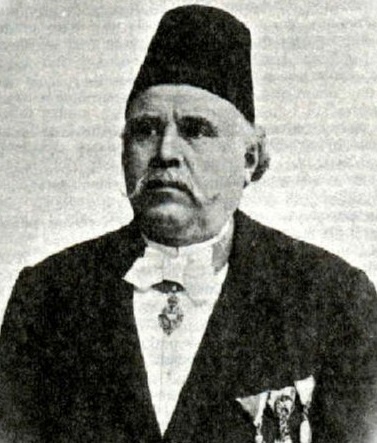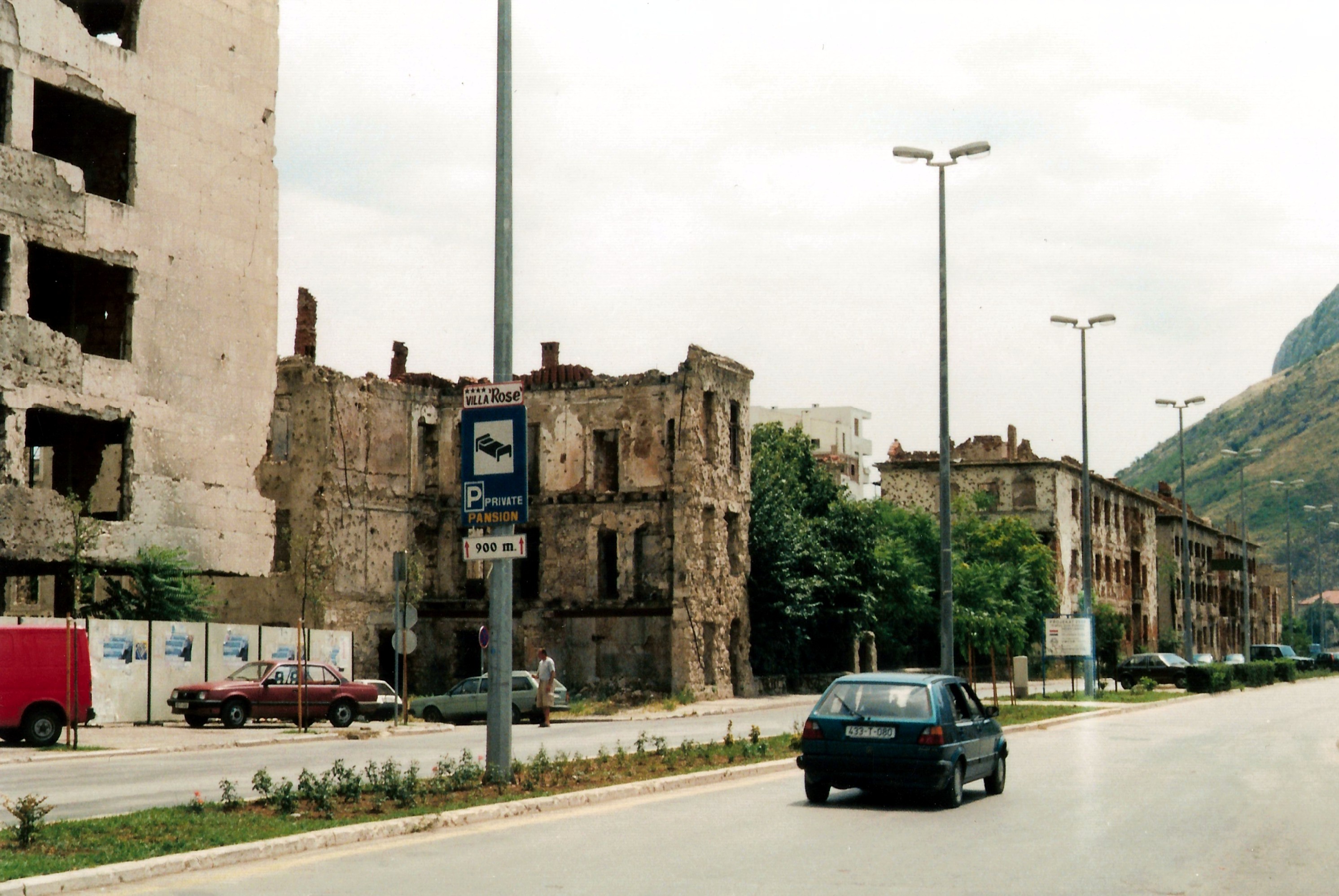|
Doljani, Jablanica
Doljani is populated place in Jablanica Municipality, Bosnia and Hercegovina, between Jablanica and Mostar. This village lies along the Doljanka river (which was named after it) Doljani are located in the northern Herzegovina, in the northeastern part of the Nature Park "Blidinje". Elevation ranges from 600 to 750 meters in the place. The highest peaks that surround the village are Baćin (1,282 m), Borovinka (1430 m), and Vitlenica (1655 m) Throughout the Doljani valley flowing the river Doljanka. History Demography According to the 2013 census, its population was 483. See also * Jablanica *Doljanka The Doljanka River is a right tributary of the Neretva river in North Herzegovina, Bosnia and Herzegovina.Spahić M. et al. (2000): Bosna i Hercegovina (1:250.000). Izdavačko preduzeće „Sejtarija“, Sarajevo. The length of Doljanka is around ... References {{Jablanica municipality Populated places in Jablanica, Bosnia and Herzegovina Villages in Bosnia and H ... [...More Info...] [...Related Items...] OR: [Wikipedia] [Google] [Baidu] |
Bosnia And Hercegovina
Bosnia and Herzegovina, sometimes known as Bosnia-Herzegovina and informally as Bosnia, is a country in Southeast Europe. Situated on the Balkans, Balkan Peninsula, it borders Serbia to the east, Montenegro to the southeast, and Croatia to the north and southwest, with a coast on the Adriatic Sea in the south. Bosnia (region), Bosnia has a moderate continental climate with hot summers and cold, snowy winters. Its geography is largely mountainous, particularly in the central and eastern regions, which are dominated by the Dinaric Alps. Herzegovina, the smaller, southern region, has a Mediterranean climate and is mostly mountainous. Sarajevo is the capital and the largest city. The area has been inhabited since at least the Upper Paleolithic, with permanent human settlement traced to the Neolithic cultures of Butmir culture, Butmir, Kakanj culture, Kakanj, and Vučedol culture, Vučedol. After the arrival of the first Proto-Indo-Europeans, Indo-Europeans, the area was populated ... [...More Info...] [...Related Items...] OR: [Wikipedia] [Google] [Baidu] |
Bosniaks Of Bosnia And Herzegovina
The Bosniaks (, Cyrillic: Бошњаци, ; , ) are a South Slavic ethnic group native to the Southeast European historical region of Bosnia, today part of Bosnia and Herzegovina, and who share a common ancestry, culture, history and the Bosnian language. Traditionally and predominantly adhering to Sunni Islam, they constitute native communities in what is today Bosnia and Herzegovina, Serbia, Montenegro, Croatia and the Republic of Kosovo. Largely due to displacement stemming from the Bosnian War in the 1990s they also make up a significant diaspora with several communities across Europe, the Americas and Oceania. Bosniaks are typically characterized by their historic ties to the Bosnian historical region, adherence to Islam since the 15th and 16th centuries, culture, and the Bosnian language. Bosniaks have also frequently been denoted Bosnian Muslims in the Anglophone sphere mainly owing to this having been the primary verbiage used in the media coverage of the ... [...More Info...] [...Related Items...] OR: [Wikipedia] [Google] [Baidu] |
Croats Of Bosnia And Herzegovina
The Croats of Bosnia and Herzegovina (), often referred to as Bosnian Croats () or Herzegovinian Croats (), are native to Bosnia and Herzegovina and constitute the third most populous ethnic group, after Bosniaks and Serbs of Bosnia and Herzegovina, Serbs. They are also one of the constitutive nations of Bosnia and Herzegovina. Croats of Bosnia and Herzegovina have made significant contributions to the culture of Bosnia and Herzegovina. Most Croats identify themselves as Catholic Church in Bosnia and Herzegovina, Catholics and speak the Croatian language. Between the 15th and 19th centuries, Christianity in the Ottoman Empire, Catholics in Ottoman Bosnia and Herzegovina were often persecuted by the Ottoman Empire, causing many of them to flee the area. In the 20th century, political turmoil and poor economic conditions led to increased emigration. Ethnic cleansing in the Bosnian War, Ethnic cleansing within Bosnia and Herzegovina in the 1990s saw Croats forced to go to different ... [...More Info...] [...Related Items...] OR: [Wikipedia] [Google] [Baidu] |
Statistical Office Of Bosnia And Herzegovina
Bosnia and Herzegovina has three governmental statistics offices, each one responsible for a different area of the government. One agency is in charge of whole country statistics (the BHAS), while the other two oversee statistics in BiH's constituent entities, the Republika Srpska and Federation of Bosnia and Herzegovina, The Federation of Bosnia and Herzegovina. This system reflects strong decentralization in the region, and several independent reports have stated that this impedes an efficiently functioning government body. To this end, the three agencies still do not fully agree on several various statistical concepts and definitions. All three agencies were established in 2004 with the passage of the ''Law on Statistics of Bosnia and Herzegovina''''.'' Also, the Central Bank, though not a statistics agency on its own, is tasked with calculating yearly balances and preparing other financial statistics. Legal framework ''The Law on Statistics of Bosnia and Herzegovina'', orde ... [...More Info...] [...Related Items...] OR: [Wikipedia] [Google] [Baidu] |
Yugoslavians
Yugoslavs or Yugoslavians ( sh-Latn-Cyrl, Jugoslaveni/Jugosloveni, Југославени/Југословени; ; ) is an identity that was originally conceived to refer to a united South Slavic people. It has been used in two connotations: the first in a sense of common shared ethnic descent, i.e. panethnic or supraethnic connotation for ethnic South Slavs, and the second as a term for all citizens of former Yugoslavia regardless of ethnicity. Cultural and political advocates of Yugoslav identity have historically purported the identity to be applicable to all people of South Slav heritage, including those of modern Bosnia and Herzegovina, Croatia, Montenegro, North Macedonia, Serbia, and Slovenia. Although Bulgarians are a South Slavic group as well, attempts at uniting Bulgaria with Yugoslavia were unsuccessful, and therefore Bulgarians were not included in the panethnic identification. Since the dissolution of Yugoslavia and establishment of South Slavic nation states, th ... [...More Info...] [...Related Items...] OR: [Wikipedia] [Google] [Baidu] |
Serbs
The Serbs ( sr-Cyr, Срби, Srbi, ) are a South Slavs, South Slavic ethnic group native to Southeastern Europe who share a common Serbian Cultural heritage, ancestry, Culture of Serbia, culture, History of Serbia, history, and Serbian language, language. They primarily live in Serbia, Kosovo, Bosnia and Herzegovina, Croatia, Montenegro as well as in North Macedonia, Slovenia, Germany and Austria. They also constitute a significant diaspora with several communities across Europe, the Americas and Oceania. The Serbs share many cultural traits with the rest of the peoples of Southeast Europe. They are predominantly Eastern Orthodoxy, Eastern Orthodox Christians by religion. The Serbian language, Serbian language (a standardized version of Serbo-Croatian) is official in Serbia, co-official in Kosovo and Bosnia and Herzegovina, and is spoken by the plurality in Montenegro. Ethnology The identity of Serbs is rooted in Eastern Orthodoxy and traditions. In the 19th century, the ... [...More Info...] [...Related Items...] OR: [Wikipedia] [Google] [Baidu] |
Bosniaks
The Bosniaks (, Cyrillic script, Cyrillic: Бошњаци, ; , ) are a South Slavs, South Slavic ethnic group native to the Southeast European historical region of Bosnia (region), Bosnia, today part of Bosnia and Herzegovina, and who share a common Genetic studies on Bosniaks, ancestry, Culture of Bosnia and Herzegovina, culture, History of Bosnia and Herzegovina, history and the Bosnian language. Traditionally and predominantly adhering to Sunni Islam, they constitute native communities in what is today Bosnia and Herzegovina, Serbia, Montenegro, Croatia and the Republic of Kosovo. Largely due to displacement stemming from the Bosnian War in the 1990s they also make up a significant diaspora with several communities across Europe, the Americas and Oceania. Bosniaks are typically characterized by their historic ties to the Bosnia (region), Bosnian historical region, adherence to Islam in Bosnia and Herzegovina, Islam since the 15th and 16th centuries, Culture of Bosnia an ... [...More Info...] [...Related Items...] OR: [Wikipedia] [Google] [Baidu] |
Croats
The Croats (; , ) are a South Slavs, South Slavic ethnic group native to Croatia, Bosnia and Herzegovina and other neighboring countries in Central Europe, Central and Southeastern Europe who share a common Croatian Cultural heritage, ancestry, Culture of Croatia, culture, History of Croatia, history and Croatian language, language. They also form a sizeable minority in several neighboring countries, namely Croats of Slovenia, Slovenia, Burgenland Croats, Austria, the Croats in the Czech Republic, Czech Republic, Croats in Germany, Germany, Croats of Hungary, Hungary, Croats of Italy, Italy, Croats of Montenegro, Montenegro, Croats of Romania, Romania, Croats of Serbia, Serbia and Croats in Slovakia, Slovakia. Due to political, social and economic reasons, many Croats migrated to North and South America as well as New Zealand and later Australia, establishing a Croatian diaspora, diaspora in the aftermath of World War II, with grassroots assistance from earlier communities an ... [...More Info...] [...Related Items...] OR: [Wikipedia] [Google] [Baidu] |
Herzegovina
Herzegovina ( or ; sh-Latn-Cyrl, Hercegovina, separator=" / ", Херцеговина, ) is the southern and smaller of two main geographical Regions of Bosnia and Herzegovina, regions of Bosnia and Herzegovina, the other being Bosnia (region), Bosnia. It presently does not have strictly defined administrative borders; however, in the past it was organized as Sanjak of Herzegovina (1470–1833; 1851–1912) and Herzegovina Eyalet (1833–1851). Bosnia, the larger of the two regions, lies to the north of Herzegovina; the Regions of Croatia, Croatian region of Dalmatia lies to the southwest; the Regions of Montenegro, Montenegrin region of Old Herzegovina lies to the southeast. The land area of Herzegovina is around , or around 23–24% of the country. The largest city is Mostar, in the center of the region. Other large settlements include Trebinje, Široki Brijeg, Ljubuški, Čapljina, Konjic and Posušje. Etymology The Ottomans were the first to officially use the name (E ... [...More Info...] [...Related Items...] OR: [Wikipedia] [Google] [Baidu] |
Doljanka
The Doljanka River is a right tributary of the Neretva river in North Herzegovina, Bosnia and Herzegovina.Spahić M. et al. (2000): Bosna i Hercegovina (1:250.000). Izdavačko preduzeće „Sejtarija“, Sarajevo. The length of Doljanka is around 18 km, and it descends about 400 meters in elevation. It rises from sources scattered under the far northeast slopes of Vran mountain at 1324 meters elevation. It runs through limestone canyon, which is up to 1,200 meters deep, and flows through the village of Doljani. The Doljanka flows into the Neretva River between Jablanica and Mostar, at an elevation of 300 m. It is also the connection over which trout from the Neretva crossing in Doljanka during spawning. The watershed of the Doljanka encompasses the area between the mountains Baćine in the north and Čvrsnica in the south: it is 69 km2 in area. It receives a small number of tributaries (Bijeli potok, Trn, Loznik, and Cvitan), so that water mainly comes from undergrou ... [...More Info...] [...Related Items...] OR: [Wikipedia] [Google] [Baidu] |
Mostar
Mostar () is a city and the administrative centre of Herzegovina-Neretva Canton of the Federation of Bosnia and Herzegovina, an entity of Bosnia and Herzegovina, and the historical capital of Herzegovina. Mostar is situated on the Neretva River and is the fifth-largest city in the country. Mostar was named after the bridge keepers (''mostari'') who guarded the Stari Most (Old Bridge) over the Neretva during the Ottoman Bosnia and Herzegovina, Ottoman era. The Old Bridge, a UNESCO World Heritage Site, commissioned by Suleiman the Magnificent in the 16th century, is one of Bosnia and Herzegovina's most visited landmarks, and is considered an exemplary piece of Islamic architecture in the Balkans. History Ancient and medieval history Human settlements on the river Neretva, between Mount Hum (Mostar), Mount Hum and the Velež Mountain, have existed since prehistory, as witnessed by discoveries of fortified enceintes and cemeteries. Evidence of Roman people, Roman occupation was di ... [...More Info...] [...Related Items...] OR: [Wikipedia] [Google] [Baidu] |





